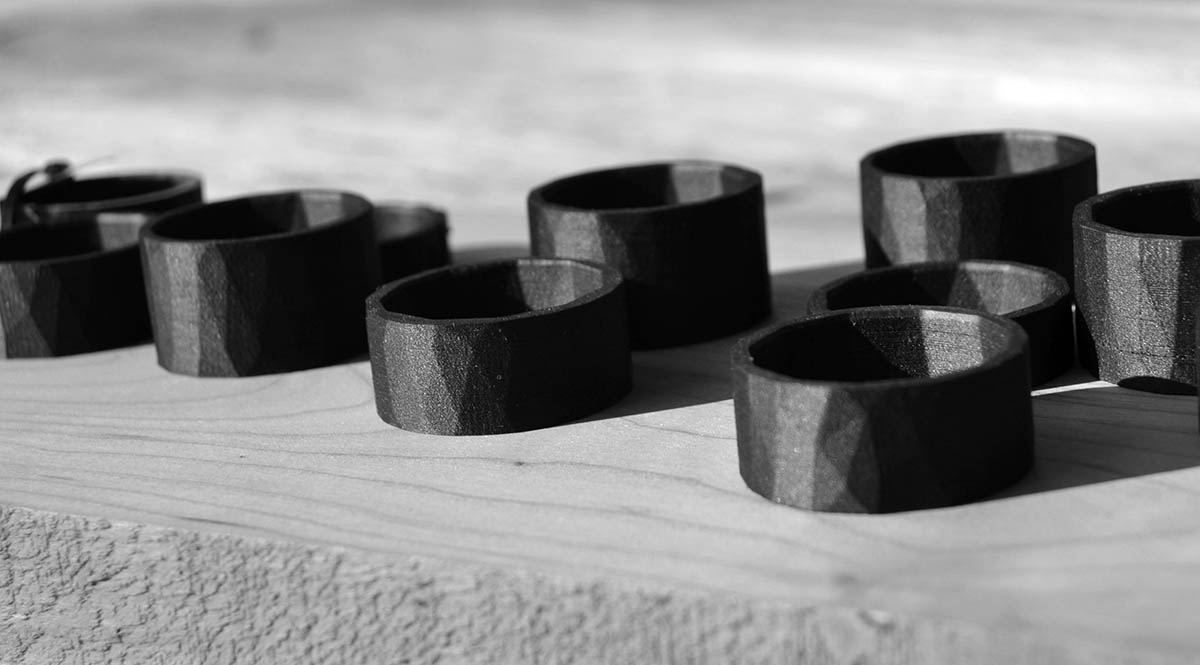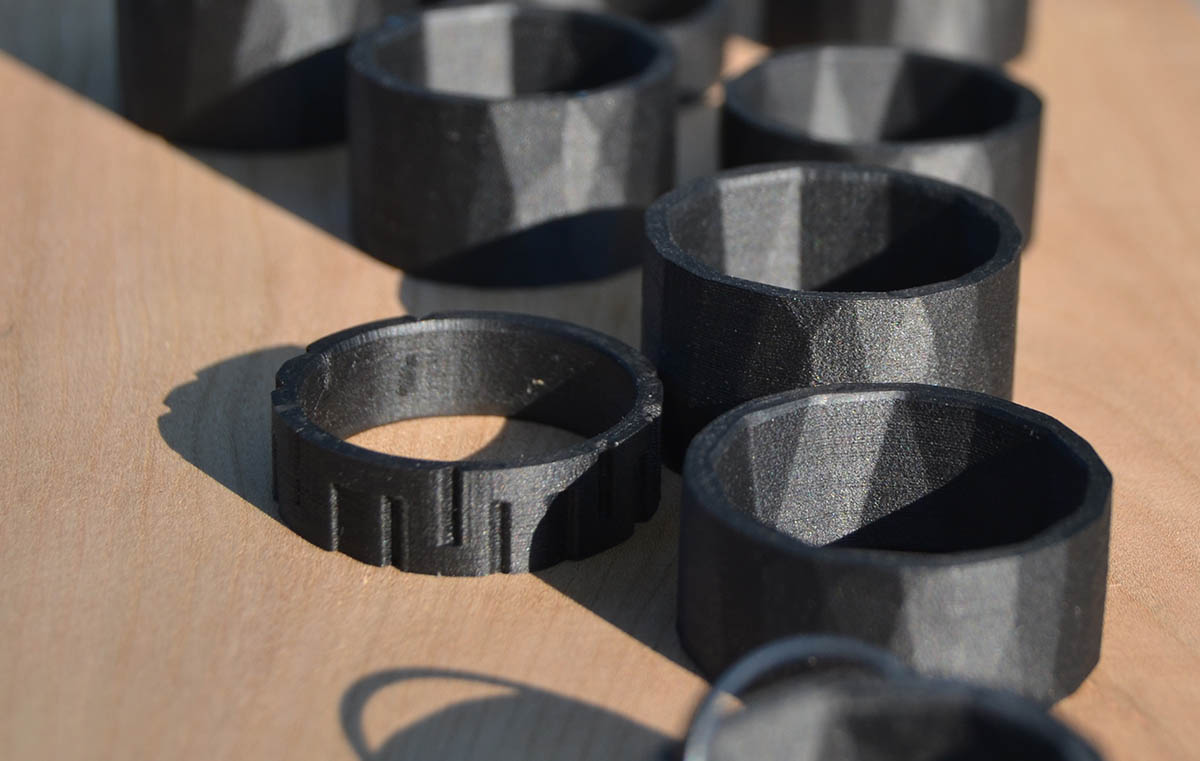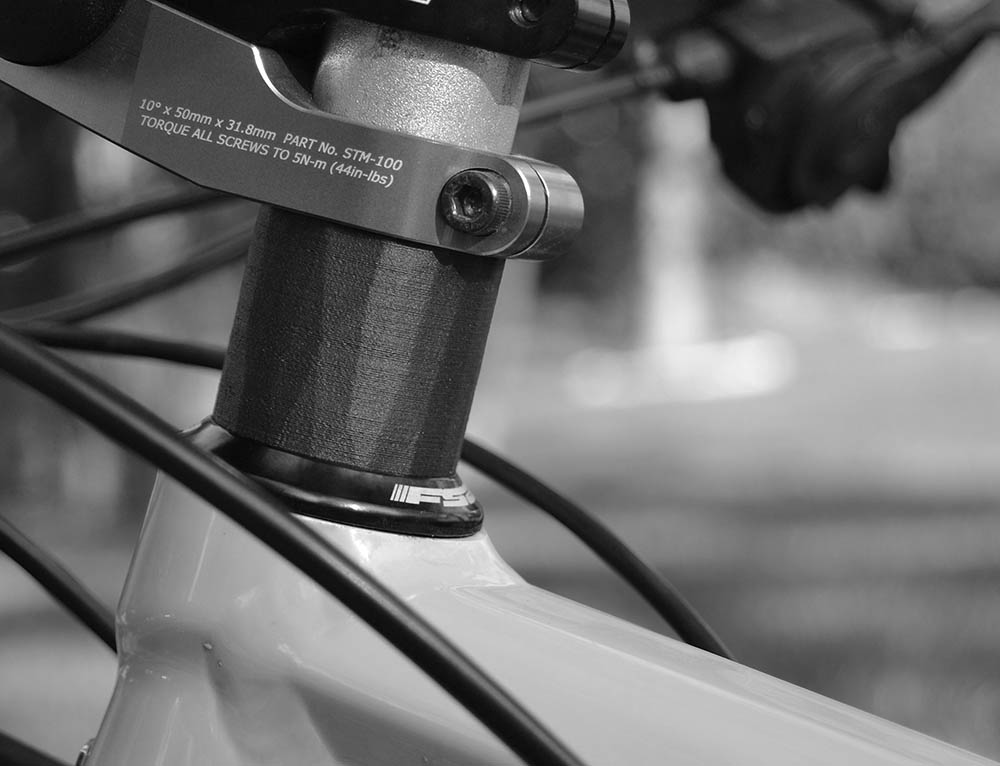Strata Cake is a small St. Louis-based outfit who has only one product – but it’s a doozy. Their CARBONCAKE headset spacers are made of 3D printed carbon fiber, weigh half as much as standard headset spacers, and are even available in custom lengths. Don’t feel weird if that makes you all giddy inside (we do, too) – so let’s check them out.
Strata Cake CARBONCAKE 3D Printed Headset Spacers
We have a thing for weird headset parts, be it super-low-profile top caps or even strange height-adjustable spacers. We also love the growing trend of 3D printed parts, so we got excited to see the two melded together into one cool product.
The CARBONCAKE spacers are available in stock lengths of 5, 10, and 20mm. However, the real news is that you can buy custom lengths in 1mm increments, ranging from 5 – 25mm. While you might think the price for this would be astronomical, it only costs about $1.50 per millimeter.
It’s not just the price that’s low either – Strata Cake claims that their custom carbon headset spacers weigh about half of what you expect from a mass-produced carbon fiber headset spacer.
Color? Black.
Even if the US manufacturing and light weight aren’t enough, proper-length headset spacers are always a win (and better looking than a stack of random-length spacers). If you want to cut some grams, clean up your front end, and support an entrepreneur, check out Strata Cake at the link below.


